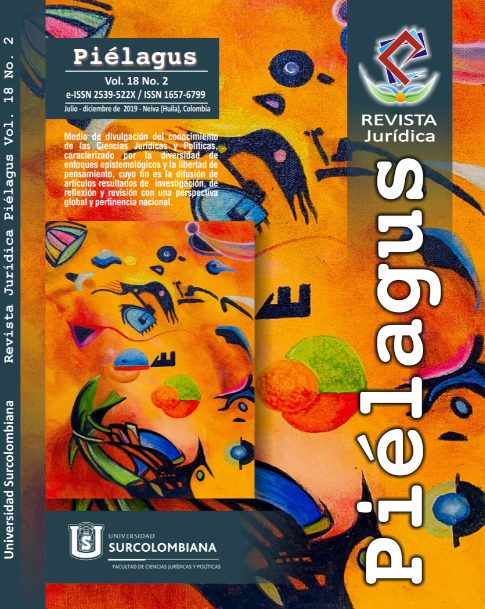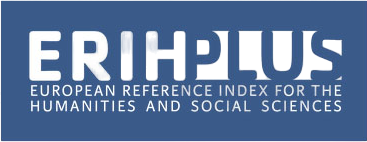Legal development and constitutional law in Colombia on the protection of the environment and water resources
##plugins.themes.bootstrap3.article.main##
In recent decades, as a result of climate change and the high temperatures presented during the so-called “El niño Phenomenon”, there has been a marked lack of water in the municipal aqueducts in Colombia and the Huila region. This problematic that generates concern in the authorities and in the general population, has aroused the interest in the academy to debate if the different legal provisions in the Colombian legislation are sufficient to deal with the environmental crisis and especially the loss of surface water resources which affects access to the liquid for human consumption. In that order, from the identification and analysis of the legal and jurisprudential development of the Constitutional Court related to environmental protection and especially to the issue of water, it was noticed that since the 20th century, due to innumerable problems caused by economic activity with negative impact on human health, the first environmental standards provided some corrective measures on the use of the water used for human consumption. Going by the Decree Law 2811 of 1974, which adopted the National Code of Renewable Natural Resources and Protection to the Environment, and a heavy regulatory environmental development, up to the political Constitution of 1991, considered to be a “green Constitution”. The regulatory and jurisprudential production regarding the legal protection of water as a generator of life has intensified since then.
Downloads
##plugins.themes.bootstrap3.article.details##
I. CEPAL (1992). Principios de Dublín. En Solanes, M., y González-Villareal, F. (2010). Recuperado de: https://archivo.cepal.org/pdfs/Waterguide/Tac3s.pdf
II. Cifuentes-Sandoval, G. (2013). Desarrollo Constitucional, Legal y Jurisprudencia del principio de rigor subsidiario. Revista Jurídicas CUC, 9 (1), 345-384. Recuperado el 29 de Septiembre del 2016 de: https://revistascientificas.cuc.edu.co/juridicascuc/article/view/454/pdf_39
III. Clavijo-Prada, S. (2015). Protección de los ecosistemas estratégicos y desarrollo: un reto para el derecho. Revista Estudios del Derecho, (159), 45. Recuperado el 5 de Octubre del 2016 de: https://doi.org/10.17533/udea.esde.v72n159a03
https://doi.org/10.17533/udea.esde.v72n159a03
IV. Díaz-Pulido, A. P., Hernández, N. C., Muñoz-Moreno, D., Olaya-González, W. R., Perilla-Castro, C., Sánchez-Ojeda, F., y Sánchez-González, K. (2009). Desarrollo sostenible y el agua como derecho en Colombia. Revista Estudios Socio-Jurídicos, 11(1), 84-116. Recuperado el 15 de abril del 2017 de https://revistas.urosario.edu.co/index.php/sociojuridicos/article/view/53
V. Agualimpia-Duabily, Y. d. C., y Méndez, E. C. (2006). Metodologías para la determinación de los caudales ecológicos en el manejo de los recursos hídricos. Tecnogestión, 3(1), 288. Recuperado el 15 de abril del 2017 de https://revistas.udistrital.edu.co/index.php/tecges/article/view/4333/6062
VI. Instituto de Hidrología, Meteorología y Estudios Ambientales - IDEAM. (2014). Estudio Nacional del Agua 2014. Recuperado el 15 de abril del 2017 de: http://documentacion.ideam.gov.co/openbiblio/bvirtual/023080/ENA_2014.pdf
VII. Marulanda-García, N., y García-González, J. (2013). Los derechos ambientales frente a "otras prioridades". Estudio de un caso emblemático. Revista Jurídicas, 10(1), 181. Recuperado el 10 de Septiembre del 2016 de: http://juridicas.ucaldas.edu.co/downloads/Juridicas10(1)_Completa.pdf
VIII. Mesa-Cuadros, G. (2013). Derechos ambientales en perspectiva de integralidad, concepto y fundamentación de nuevas demandas y resistencias actuales hacia el "Estado ambiental de derecho". 3 ed. Bogotá. Universidad Nacional de Colombia.
IX. MinAmbiente, (2010). Ministerio de Ambiente, Vivienda y Desarrollo Territorial, Viceministerio de Ambiente, Dirección de Ecosistemas, Grupo de Recurso Hídrico. (2010). Política nacional para la gestión integral del recurso hídrico. Recuperado el 16 de noviembre del 2016 de: https://www.minambiente.gov.co/index.php/component/content/article?id=1932:politica-nacional-para-la-gestion-integral-del-recurso-hidrico#documentos-de-inter%C3%A9s
X. MinAmbiente, (2014). Ministerio de Ambiente y Desarrollo Sostenible. Guía técnica para la formulación de los Planes de Ordenación y Manejo de Cuencas Hidrográficas POMCAS. Recuperado el 15 de abril del 2017 de: https://www.minambiente.gov.co/images/GestionIntegraldelRecursoHidrico/pdf/Gu%C3%ADa_POMCAs/1._Gu%C3%ADa_T%C3%A9cnica_pomcas.pdf
XI. Mondéjar-Pedreño, R. (2015). Los conflictos ambientales y su tratamiento a través de la mediación. Editoral Dykinson.
XII. Naciones Unidas. (2015). Objetivos de desarrollo sostenible. 17 objetivos para transformar nuestro mundo. Recuperado de: http://www.un.org/sustainabledevelopment/es/la-agenda-de-desarrollo-sostenible/
XIII. Rincón-Córdoba, J. (2012). Planes de ordenamiento territorial, propiedad y medio ambiente. Universidad Externado de Colombia. Recuperado de: https://publicaciones.uexternado.edu.co/catalog/product/view/id/25871/
XIV. Rojas, P. J. (2011). Injusticia hídrica en Colombia: un esbozo. En: Boelens, R., L. Cremers y M. Zwarteveen (2011). Acumulación, conflicto y acción social. Revista Justicia Hídrica. Instituto de Estudios Peruanos y Fondo Editorial Universidad Católica del Perú, Lima. Cap. 16. 279-296. Recuperado el 15 de abril del 2017 de http://justiciahidrica.org/wp-content/bibtex/pdf/16JH1_Rojas_Cap.16.pdf
XV. Santos-Boaventura, S. (1998). La globalización del derecho: los nuevos caminos y la emancipación. Bogotá. Universidad Nacional de Colombia.
XVI. Valencia-Hernández, J. G. (2007). Estado ambiental, democracia y participación ciudadana en Colombia a partir de la Constitución de 1991. Revista Jurídicas, 4(2), 172. Recuperado de: http://juridicas.ucaldas.edu.co/downloads/Juridicas4-2_10.pdf
XVII. CConst, T-411/1992, A. Martínez.
XVIII. CConst, C-058/1994, A. Martínez.
XIX. CConst, T-244/1994, H. Herrera.
XX. CConst, T- 523/1994, A. Martínez.
XXI. CConst, C-671/2001, J. Araújo.
XXII. CConst, C-293/2002, A. Beltrán.
XXIII. CConst, T-410/2003, J. Córdoba.
XXIV. CConst, T-270/2007, J. Araújo.
XXV. CConst, T-418/2010, M. Calle.
XXVI. CConst, C-595/2010, J. Palacios.
XXVII. CConst, C-220/2011, J. Pretelt.
XXVIII. CConst, T-608/2011, J. Henao.
XXIX. CConst, C-094/2015, L. Vargas.
XXX. CConst, T-080/2015, J. Palacio.
XXXI. CConst, C-449/2015, J. Palacio.
XXXII. CConst, T-445/2016, J. Palacio.
XXXIII. CConst, T-622/2016, J. Palacio.
XXXIV. D. 1381/1940.
XXXV. D. L. 2811/1974.
XXXVI. D. 1449/1977.
XXXVII. D. 1541/1978.
XXXVIII. D. 2857/1981.
XXXIX. D. 1594/1984.
XL. L. 79/1986.
XLI. L. 99/1993, Art. 111.
XLII. L. 1151/2007, Art. 106.
XLIII. L. 1450/2011, Art. 210.
XLIV. D. 953/2013.
XLV. Contraloría General de la República, C. 008/2008.
XLVI. Contraloría General de la República, C. 009/2008.

















